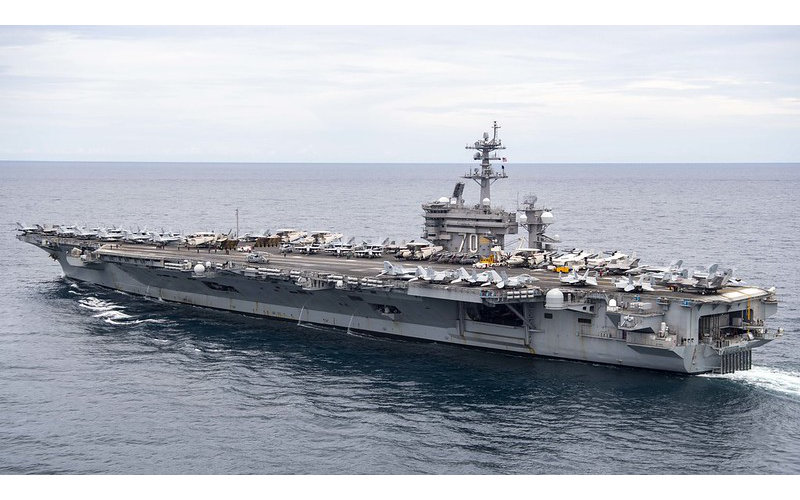Chinese overflights signal to US rather than threat to Taiwan
Oct 14, 2021
Despite the fuss made over China’s recent military exercise over Taiwan, it’s becoming clear that China’s message was actually directed at the United States in response to its recent military drills in the region.
The more we learn, the more it appears the recent large Chinese military overflights — which attracted so much Australian political commentary and so many ill-informed headlines — were directed as a signal to the US rather than as a threat to Taiwan.
Just to repeat. While the size of these recent People’s Liberation Army (PLA) overflights was unprecedented they did not constitute “intrusions” into Taiwan’s territorial airspace. In fact, they were several hundreds of kilometres away from Taiwan and pointing even further east.
According to the flight paths mapped by Taiwan authorities, they were even outside the 12-mile territorial airspace around the Pratas atoll located to the east of Hong Kong, which is claimed by both China and Taiwan (which maintains a small military force on the otherwise uninhabited island).
They crossed the southwestern corner of Taiwan’s self-proclaimed air defence identification zone (ADIZ) which extends deep into the Chinese mainland. Not surprisingly, US military surveillance aircraft from Guam and Okinawa have often been reported flying through this same general area.
My recent Pearls and Irritations article pointed to research from The Diplomat (June 2021) on PLA overflights from September 2020 to June 2021 based on official Taiwan sources.
Of the total 173 PLA overflights in that period only six involved 15 or more aircraft!
The very frequent smaller overflights were seen as linked to Chinese monitoring of foreign warship movements through the Bashi Channel between the South China Sea and the Philippine Sea. It concluded that: “A plausible argument can be made that with each of the large-scale incursions, Beijing was reacting to provocations from Washington regarding some form of diplomatic or political overture to Taipei.”
Among larger overflights recorded earlier this year were three which were assessed as responding to a “high intensity” operation by a US carrier group in the northern sector of the South China Sea.
The recent upsurge in anti-Chinese rhetoric in the US domestic arena, in no small part fuelled by former President Donald Trump’s 2024 ambitions, has pressured the Biden administration to make strong statements of commitment to Taiwan and back it with large defence sales.
Following the above pattern, this may have contributed to Beijing’s decision to make such a strong military gesture. But it seems more likely that the tipping point could well have been the major joint exercise arranged by the US in the Philippine Sea midway from Taiwan to Guam at exactly the same time in early October.
Heralded by the US media release as demonstrating “the U.S. Navy’s ability to work closely with its unmatched network of alliances and partnerships in support of a free and open Indo-Pacific”, it involved an unusual motley group of navies — US, UK, Japan, Canada, New Zealand and the Netherlands — for this part of the world. But not Australia, though the Royal Australian Navy had been engaged in joint exercises in the western Pacific in the weeks beforehand.
The UK’s PR proclaimed the exercise was ”a demonstration of naval might in the Philippine Sea”!
The exercise brought together an impressive array of ships headed by two US carriers, the new British carrier HMS Queen Elizabeth and a large Japanese helicopter flattop ship with 13 other surface vessels — an unprecedented scale of armada for this part of the world.
Presumably it also included some submarines for the requisite protection of the massive carriers and also for participation in the anti-submarine warfare involved in the exercise — media revealed one was Japanese.
The promo material described the exercise being centred on a “tropical island” and involving a significant component of US Marines from Okinawa — echoes of the “The Halls of Montezuma” ringing around the nearby Iwo Jima! Whatever the blurb, its location and the US reference to “alliances and partnerships” would have left Beijing in no doubt that “it was all about China” and the PLA overflights flights provided a military show of strength in response to the exercise.
Details of the accident suffered by the US nuclear submarine USS Connecticut naturally are still pretty sketchy.
Understandably, there has been a lot of pea and thimble about the location of the accident. The initial official brief statements by US authorities stated only that the accident had occurred in “international waters of the Indo Pacific”.
Commentary from unnamed officials suggested that it had occurred in the South China Sea — although one source indicated it was in the Philippine Sea. But it would seem probable that it was involved in the same joint exercise above which has been tracked in the Philippine Sea around the date of the accident and from where the Connecticut made its way on the surface to Guam.
A number of experts have indicated that the underwater topography in that broad region poses some serious challenges for submarines.
Others speculate that it might have hit one of the many shipping containers floating around at sea. We may well never get to know exactly what happened but the extent of the damage to the submarine could be enough to take it out of line for a lengthy period of time just when the US is struggling to beef up its submarine capability.
Beijing’s reaction to the news of Connecticut’s accident has been uncommonly cautious.
The Chinese Foreign Ministry spokesperson expressed “grave” concern about the accident and (disingenuously) urged the US to provide more details of the location of the accident, the purpose of the submarine in the area and whether there had been any nuclear leak into the marine environment. He said it seemed likely that the submarine had collided with an “unmanned underwater detection vehicle”, many of which the US had deployed in the area to monitor the hydrological profile and Chinese submarines.
It suited Beijing’s purpose not to challenge reports of the location being in the South China Sea as he went on to link the accident to ASEAN’s longstanding attempts to build a nuclear-weapon-free zone in South-East Asia and claimed that AUKUS and its provision of nuclear submarines to Australia “recklessly increases nuclear risks” in the region.
It needs to be borne in mind that all this controversy has taken place soon after the long awaited and extraordinarily important conversation between Presidents Joe Biden and Xi Jinping and the lengthy follow up in Zurich between their top aides.
Details of these talks are still closely held and cannot be covered here but there do appear to be some glimmers of Biden and Xi trying to better manage the US-China bilateral relationship, although many in the media here and in the US continue to beat up the ”drums of war”.
In regard to the above Biden and his close advisers have been meticulously careful in describing the PLA flights as being “near” Taiwan, not in Taiwanese territorial airspace.
Biden has also parried media attempts to heat up reaction to the overflights by saying: “I’ve spoken with Xi about Taiwan. We agree … we’ll abide by the Taiwan agreement … we made it clear that I don’t think he should be doing anything other than abiding by the agreement.”
Just a few days later in his major National Day speech, Xi repeated his firm conviction that Taiwan would be reunified under Beijing but emphasised that this would occur “peacefully”.
And, China’s response in recent days to US media reports of US military advisers/trainers being sent to Taiwan have been measured. The Chinese were quick to make the point that the US has been secretly providing this assistance to Taiwan for many years so it comes as no surprise and essentially is not a big deal.




